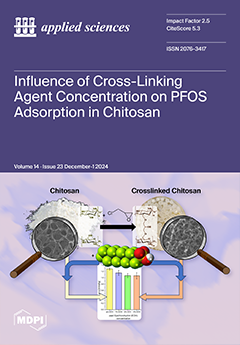Increased ammonia (NH
3) emissions from intensive agriculture negatively affect environmental and ecosystem health, contributing to formation of particulate matter (PM) and the potent greenhouse gas, N
2O. Better understanding NH
3 emissions from the manure composting process and their behavior
[...] Read more.
Increased ammonia (NH
3) emissions from intensive agriculture negatively affect environmental and ecosystem health, contributing to formation of particulate matter (PM) and the potent greenhouse gas, N
2O. Better understanding NH
3 emissions from the manure composting process and their behavior as a constituent of the atmospheric aerosol load is a crucial element in creating better farm management systems, improving public health outcomes, and mitigating the broader environmental and climatic impacts of agriculture. Retarded generation of PM with a major constituent source of NH
3 is a primary mechanism for evaluating the effects of agricultural contribution to PM. This study aimed to quantify NH
3 emissions, examine the influence of environmental factors, and investigate the relationship between precursor gases (SO
2, NO
x, NH
3) and PM
2.5 at a modern manure composting facility in Paju, South Korea. Over 35 days, average internal concentrations of NH
3, SO
2, and NO
x were significantly higher than external levels. NH
3 concentrations reached 3.64 ± 0.06 mg m
−3 at 3 m height and 2.43 ± 0.16 mg m
−3 at ground level, while the total NH
3 flux from the facility was 24.47 ± 1.39 NH
3-N kg d
−1. Internal PM
2.5 concentrations (36.9 ± 2.6 µg m
−3) were about 50% higher than external levels (23.7 ± 2 µg m
−3), with a moderate correlation (r = 0.341) suggesting some contribution of external PM
2.5 to internal levels. Despite large quantities of internal emissions, the facility’s sealed design with a negative pressure ventilation system effectively minimized external emissions. These results suggest that while manure composting facilities are significant sources of NH
3 and PM
2.5, advanced systems like high-volume ventilation and scrubbing technologies can effectively reduce their impact on regional air pollution, contributing to better environmental management in agriculture.
Full article





